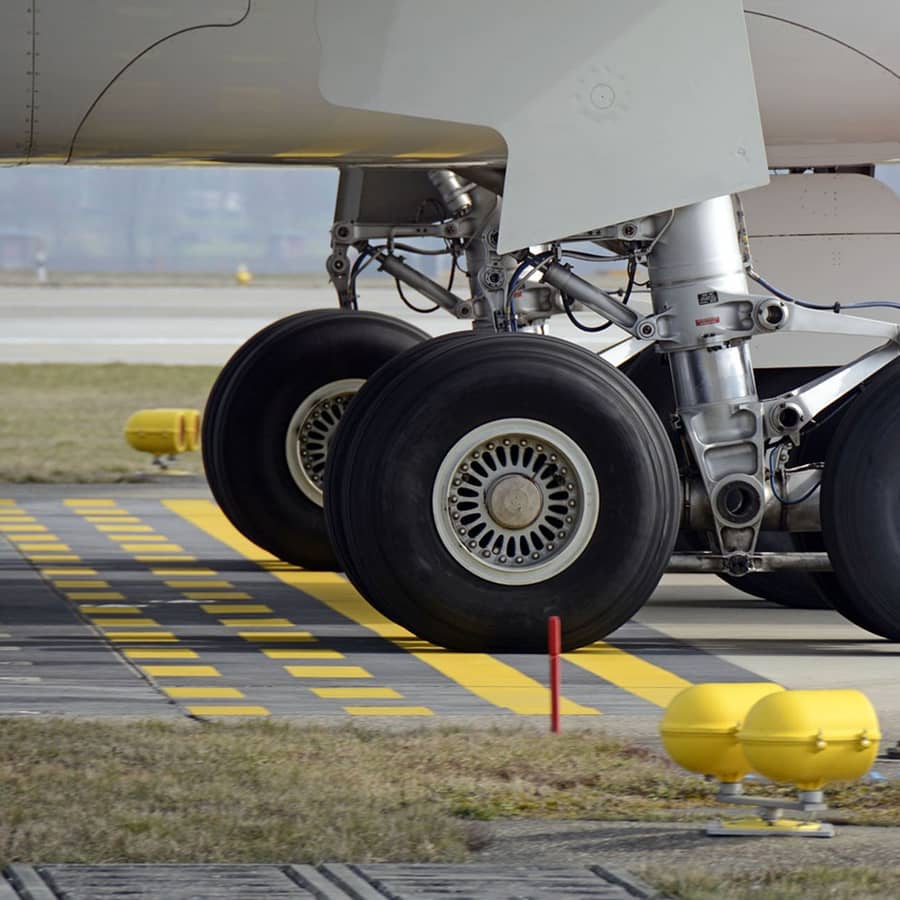In the article, we’ve listed the 3 main groups of airfield line markings, including taxiway markings, runway markings and holding position markings, and then given a brief description of some of the types of line markings within the groups.
Taxiway Markings
The taxiway of an airfield is the route the aircraft takes from the ramp or parking area to the runway. Airfields will usually consist of one or more parallel taxiways so that landing planes have a quick and safe route off the runway.
Due to the unique challenges pilots face navigating an airfield, including low visibility and the slow manoeuvrability of a grounded aircraft, to ensure clarification from the runway, most taxiway line markings are yellow.
Three taxiway markings include:
Centreline stripe
As the name suggests, this solid yellow stripe shows the pilot the centre of the taxiway, allowing them to position the aircraft safely within the outside boundaries, or any protruding obstacles.
Shoulder markings
The pavement edges or ‘aprons’ of a taxiway are marked by shoulder line markings, which are made up of a series of angled yellow hashes.
Holding markings
Holding markings on an airfield taxiway are to let a pilot know they need to wait (hold) at that point and consist of single dashed yellow lines, painted perpendicular to the taxiway.
Runway markings
The runway of an airfield shouldn’t need explaining, it’s where the planes take off and land, but as with all sections of the airfield, safety at all times is vital and line markings play an essential role in ensuring that safety.
Three types of runway line markings include:
Centreline markings
Centreline markings on a runway allow the pilot to accurately judge the centre of the runway when landing or taking off and are simply a single white stripe down the centre of the runway.
Threshold markings
Threshold markings are to help pilots identify the beginning of the runway they need to land on, and consist of white stripes running either side of the centerline markings.
Aiming point markings
Aiming point markings are found at airports with thresholds, and are literally the point the pilot needs to aim for when landing. Aiming point markings are made up of two thick parallel white lines.
Holding position markings
Holding positions on an airfield are the points where planes need to wait until the clearance is given to proceed. There are three main types of holding position markings, including:
Intersecting taxiway holding position markings
These lines allow the pilot to hold the aircraft so that none of its parts crosses the intersecting taxiway, and consist of a single dashed yellow line.
Instrument Landing System holding position markings
Consisting of two solid yellow lines spaced two feet apart and connected by solid white lines spaced ten feet apart, these lines indicate a critical holding position where the pilot must wait until they receive clearance from air traffic control (ATC).
Surface-painted holding position signs
These line markings are to reinforce holding position signs and are made up of a red background with a white inscription.
Contact us
If you’re looking for a professional line marking company, for the installation of road markings, warehouse markings, markings for car parks, or airports, anywhere in the UK, contact City Road Markings today, either via the website contact form, by email, or by phone, to speak directly to a line marking expert.
